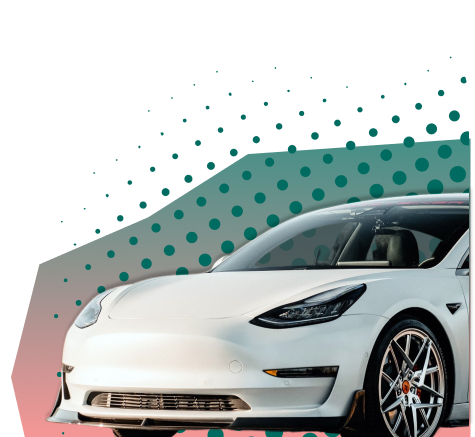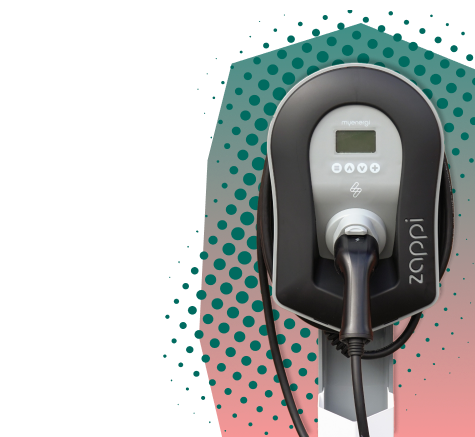What is E-Mobility?
E-mobility encompasses all forms of transportation that are powered by electricity, including cars, motorcycles, buses, trains, boats, and even airplanes. That includes micro-mobility, which relates to e-bikes, e-scooters, e-skateboards, and so on. With advancements in technology and increasing awareness of the environmental and convenience benefits of e-mobility options, the market is expected to see significant growth in the next few years. In this article, we will explore some of the e-mobility trends and targets to watch. Are you ready?
 6 E-Mobility Trends To Watch
6 E-Mobility Trends To Watch
-
Increasing Adoption of EVs
The first e-mobility trend we’d like to discuss is the increasing adoption of EVs. Electric vehicles (EVs) have been gaining popularity due to various factors such as advancements in technology, decreasing costs, and growing environmental concerns. Improved technology has resulted in longer driving ranges and better battery performance, making EVs a more practical choice for daily use. Additionally, falling costs for batteries and other components have made EVs more affordable for the average consumer. Finally, heightened awareness about the negative impacts of traditional fossil-fuel-powered vehicles on the environment has led to increased demand for clean, sustainable transportation options, including EVs. With all of these factors combined, the number of EVs on the roads is expected to continue to increase
-
Development of charging infrastructure
One of the key challenges facing the widespread adoption of EVs has been the lack of charging infrastructure. To address this issue, governments and private companies are investing in the development of charging networks. This includes the installation of fast charging stations that allow EV drivers to quickly and easily charge their vehicles, even on long road trips. Additionally, there is a focus on making charging more convenient and accessible, such as through the installation of charging solutions at homes and workplaces. This will allow EV drivers to easily charge their vehicles overnight or while they are at work, without having to make a special trip to a charging station. By improving the charging infrastructure, the goal is to make it easier and more convenient for EV owners to charge their vehicles, thereby encouraging more widespread adoption of EVs. Developments in charging infrastructure for electric cars will also prove beneficial for the adoption of micro-mobility and it’s subsequent charging too. Just like electric vehicles, the use of renewable energy for charging micro-mobility options is also expected to increase in the coming years. According to a report by the IEA, the use of renewable energy for charging e-bikes and e-scooters is expected to increase from 4% in 2019 to 40% in 2030. This trend is expected to continue, as more governments and private companies invest in renewable energy sources such as solar and wind power.
-
Expansion of the electric two-wheeler market

The electric two-wheeler market refers to the segment of the electric vehicle market that includes electric scooters, motorcycles, and other similar vehicles with two wheels. This market has been growing rapidly in recent years, driven by several factors such as increasing awareness about the environmental impact of traditional gasoline-powered two-wheelers, the need for more efficient and cost-effective modes of transportation, and the availability of affordable and practical electric two-wheelers. The expansion of this market is likely to continue as more and more people adopt electric two-wheelers for their daily transportation needs, and as improvements in battery technology and charging infrastructure make electric two-wheelers a more practical and convenient option. This will have a positive impact on the environment by reducing emissions and reducing dependence on fossil fuels.
-
Growing popularity of shared mobility
Shared mobility refers to the use of shared vehicles, such as electric car-sharing and bike-sharing services, instead of privately owned vehicles. This trend has been growing in popularity in recent years, and is expected to continue to grow. The increasing popularity of shared mobility is driven by several factors, including the convenience of having access to a vehicle without the need to own one and the cost savings compared to owning a vehicle. Shared electric vehicles also offer the advantage of being powered by clean, renewable energy, which is becoming an increasingly important consideration for many consumers. As the popularity of shared mobility continues to grow, it is likely to have a positive impact on the environment by reducing the number of privately owned vehicles on the road.
-
Increased investment in battery technology
Battery technology is a critical aspect of the growth and success of the e-mobility market. As the number of EVs, electric bikes, and electric scooters on the road continues to increase, there will be a continued investment in battery technology to improve their performance and make them more practical for everyday use. This includes the development of more efficient and cost-effective batteries, which will make EVs and micro-mobility more affordable and accessible to a wider range of consumers. Additionally, there is a focus on the integration of advanced technologies, such as solid-state batteries, which have the potential to significantly improve the range and charging time of EVs. By continuing to invest in and improve battery technology, the goal is to make e-mobility a more practical and attractive option for consumers and to support the growth of the market.
-
Growth in the micro-mobility market in emerging economies
Last e-mobility trend we expect to boom is the growth of micro-mobility in emerging economies. The micro-mobility market is not limited to developed countries but is also expected to see significant growth in emerging economies. According to a report by the IEA, the number of e-bikes and e-scooters in emerging economies is expected to increase from 10 million in 2019 to 150 million in 2030. This trend is expected to continue, as more consumers in emerging economies opt for micro-mobility options instead of traditional gasoline-powered vehicles and more rural communities invest in micro-mobility options to support sustainable transportation and reduce the environmental impact of transportation.
In conclusion, the e-mobility market is expected to see significant growth with a few different trends and targets taking the main stage. Increasing adoption of EVs, development of charging infrastructure, expansion of the electric two-wheeler market, the growing popularity of shared mobility, increased investment in battery technology, and growth in the micro-mobility market in emerging economies will all contribute to the boom on e-mobility. The development of charging infrastructure and improvements in battery technology will make e-mobility options more practical and convenient for daily use. With these trends and developments, the e-mobility market will accelerate faster than before in the coming years.
At Storm4, we pride ourselves on partnering with the biggest disruptors on the market, who are on a mission to accelerate the transition to a greener tomorrow through electric mobility. We support their growth plans by connecting them with top talent within the GreenTech space. If this sounds like something you need support with, don’t hesitate to get in touch!












